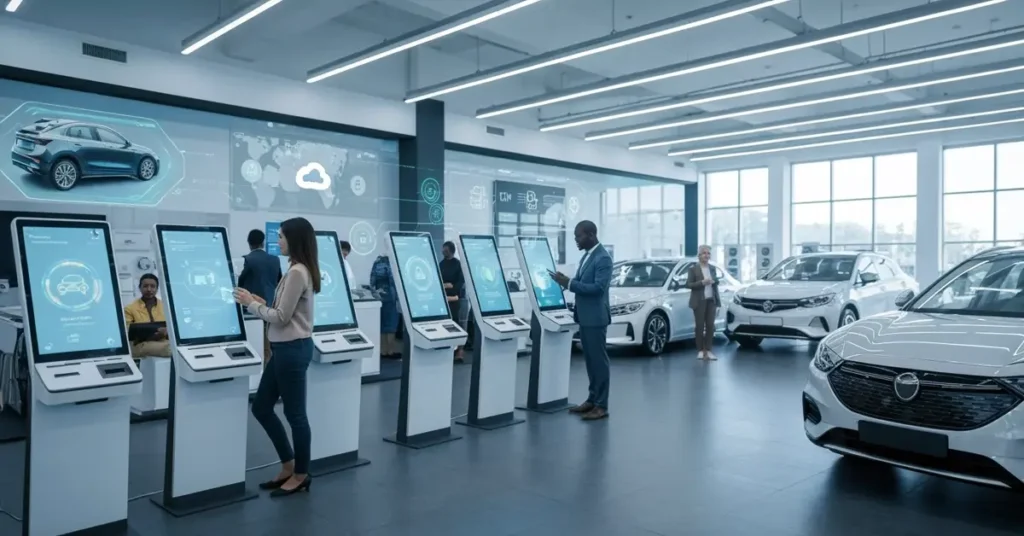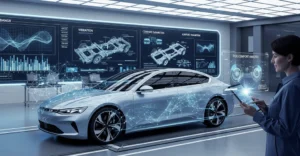In today’s fast-evolving automotive landscape, selling vehicles isn’t just about horsepower and sleek design it’s about how well you support the customer after the sale. With more people expecting frictionless, responsive, and personalized service, customer support is quickly becoming the backbone of brand loyalty.
A recent Accenture report confirms this: 92% of automotive dealers believe customer experience (CX) is a key driver of future success. On the flip side, 46% of customers are willing to switch to a different OEM (Original Equipment Manufacturer) for better service. This isn’t just a red flag it’s a roadmap to where the industry must go.
Let’s unpack the real challenges and solutions through the lens of real-world case studies and examples.
1. The Digital Shift: More Than Just a Website
The Challenge:
As car buyers move online, dealerships must catch up. But switching from physical to digital platforms isn’t as simple as creating a website. It’s about designing end-to-end digital experiences from browsing and booking to live chat and aftersales care.
Case Insight:
Take Toyota Southeast Asia, which launched a fully digital showroom platform integrated with WhatsApp. They saw a 22% increase in lead conversion by enabling live consultations and virtual test drives.
How to Overcome It:
- Partner with digital experts to create intuitive interfaces.
- Invest in tools like online configurators and virtual walk-arounds.
- Use analytics to spot friction points and improve UX continuously.
2. Keeping Pace with Rapid Tech Changes
The Challenge:
With the rise of EVs, ADAS, and connected cars, support teams must answer technical queries that didn’t exist a decade ago.
Real-World Example:
When Hyundai launched the IONIQ 5, early buyers reported confusion around charging networks and vehicle-to-load features. Hyundai responded by training call center agents and launching a dedicated EV knowledge base.
How to Overcome It:
- Run ongoing training for support staff, especially in emerging tech.
- Create self-service portals for EV and ADAS-related FAQs.
- Integrate chatbot AI to triage technical queries quickly.
Salesforce’s “State of the Connected Customer” report shows that 88% of consumers value experience as much as product quality.
3. Consistency Across Channels
The Challenge:
Your customer talks to you via Instagram, calls support, and visits a service center. If each interaction feels like starting over, you’ve lost trust.
Case Study:
Volkswagen India unified their CRM systems across physical and digital touchpoints, leading to a 35% drop in complaint resolution times.
How to Overcome It:
- Implement omnichannel CRM systems that track user behavior and preferences.
- Train all staff to access customer history and maintain a consistent tone.
- Centralize messaging strategies to avoid contradictory responses.
4. Data Security & Compliance Across Borders
The Challenge:
Customers today hand over a lot of personal information service history, financial data, and even real-time driving stats from connected cars. With regulations like GDPR, PDPA, and CCPA, auto companies must tread carefully.
Case in Point:
A major Asian OEM faced backlash after a minor data leak involving service appointment logs. While no sensitive financial data was exposed, the reputational damage led to a 4% dip in customer retention over 3 months.
How to Overcome It:
- Store customer data on secure, encrypted platforms with region-specific compliance controls.
- Regularly audit internal access and conduct staff training.
- Use AI for real-time fraud detection and anomaly alerts.
5. Soaring Customer Expectations
The Challenge:
People expect Amazon-like speed and personalization even when booking a tyre change. Anything less feels frustrating.
What Leading Brands Are Doing:
Lexus offers hyper-personalized service reminders based on mileage and driving behavior. These proactive touches boost workshop visits and NPS scores.
How to Overcome It:
- Use AI to anticipate customer needs based on history.
- Offer flexible service booking options mobile mechanics, pick-up/drop-off, etc.
- Send real-time updates via preferred channels (SMS, WhatsApp, email).
6. Making the Whole Journey Effortless
The Challenge:
Buying or servicing a car involves dozens of touchpoints and the process often feels broken. Customers want a journey that’s not just functional but effortless.
Case Insight:
Kia Motors UAE mapped their full customer journey from online inquiry to post-service follow-up and discovered friction in their vehicle delivery coordination. After streamlining the handover process, customer satisfaction jumped by 27%.
How to Overcome It:
- Build a customer journey map that includes emotional and practical pain points.
- Add feedback loops at key milestones (test drive, delivery, first service).
- Create self-service tools like how-to videos, knowledge bases, and live support widgets.
Final Thoughts
Customer expectations are not slowing down and neither should your support strategy. Whether you’re a global OEM or a growing local dealership, the winners in the next decade will be those who treat support not as a cost center but as a core differentiator.
Customer experience is no longer just about answering calls it’s about anticipating needs, delivering delight, and building relationships that last far beyond the test drive.
Want to Take Your Customer Support to the Next Level?
MotorHub helps automotive businesses deliver faster, more transparent, and tech-powered customer service. From live service tracking to digital service logs and reviews, we make support effortless for both you and your customers.
Visit www.motorhub.club for more insightful automotive articles, tools, and smart solutions to grow your business.



